
Friends of Lee Point (FLP) are a community-based group of Darwin residents campaigning to conserve Lee Point while encouraging the efficient use of land, infrastructure and services in Darwin. We acknowledge that the Larrakia are the traditional owners of Lee Point and the land and surrounding sea require protection, management and respect from all.
Greetings Friends,
This month; the Lee Point underground art exhibition opened at the WW11 Tunnels and people continued to enjoy the Gouldian Finches at Lee Point.
1. Lee Point underground art – “What you like about Lee Point”
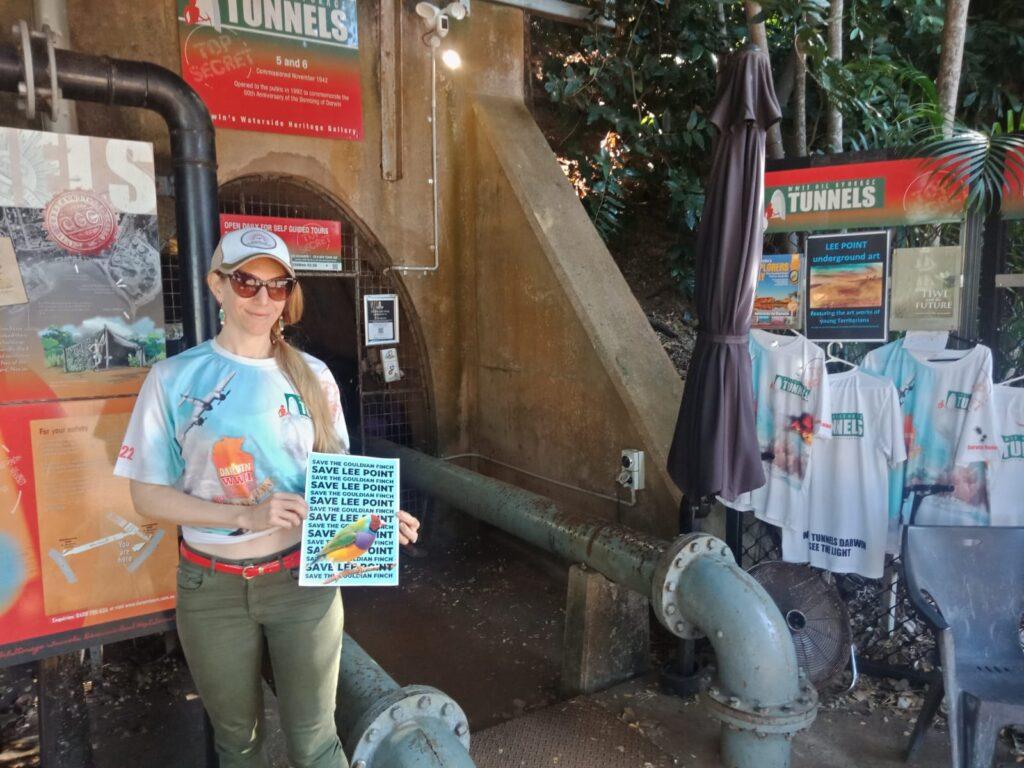
Lee Point art has gone underground in the WW11 Tunnels at the Waterfront. Special thanks to Robert Marchant for making this historic site available. The exhibition contains (40) selected artworks from the Lee Point Art Competition and is open daily from 9-4pm.
View the prize winners, award ceremony and entries.
2. Lee Point Housing Development – STAGE 2 APPROVED BY NTG
Stage 2 will destroy the Corridor – who benefits from this – not the community or wildlife!!

Stage 2 is north of Lyons
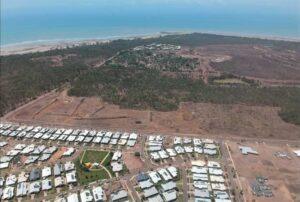
Lee Point peninsular with land clearing for Stage 1 in the foreground– photo Oct 2021
The Australian Government wholly owns the developer, Defence Housing Australia (DHA), and the land that is planned to be bulldozed at Lee Point. Who benefits .…. read more.
For people voting in the Fannie Bay by-election on 20 August, ask your candidates “If elected: will you support a moratorium on the current DHA housing development until the NT Planning Commission has completed a comprehensive Area Plan for the whole of Lee Point.”
3. State of Environment Report 2021 and Lee Point
The five-yearly State of Environment (SoE) report was released this month by Minister for Environment and Water – Tanya Plibersek. The report found Australia’s environment in a “poor and deteriorating state”.
ABC News said the SoE report makes for grim reading and land clearing was largely blamed for losses in wildlife. Watch breakdown on ABC 19 July (runs 2m 24s).
Lee Point is in a deteriorating state due to land clearing and invasive weeds ie. Gamba and Mission Grass. Cats and climate change are also having an impact. Threatened wildlife that will be negatively impacted by the DHA development include: birds ie. migratory shorebirds and Gouldian Finch, small mammals ie. Black-footed Tree Rat, and marine turtles ie. Flat-backed Sea Turtle.
4. Migratory shorebirds expected back soon
We hope to see our migratory shorebirds landing at Lee Point in a few weeks from places like Siberia (~10,000km away). Some spend more time here than anywhere else.
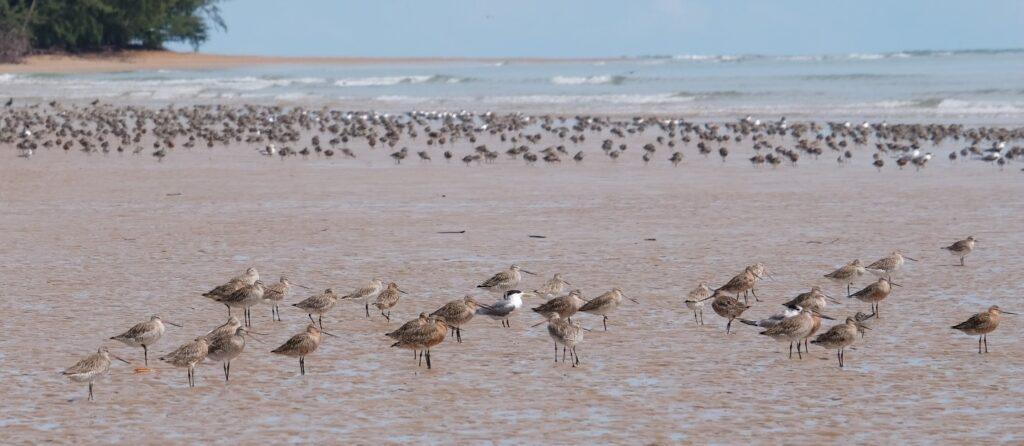
The birds in the centre are (threatened) Bar-tailed Godwits. These birds hold the world record for the longest non-stop flight for a migratory shorebird, approx 12,000km. Getting disturbed by dogs affects their survival. Professor Stephen Garnett talks to the ABC at Lee Point about the threats these birds face.
5. Environment Centre NT (ECNT)
Gouldian Finches are most likely breeding at Lee Point. This information was not available to the minister when the decision to approve the DHA development was made.
ECNT has made a request to the Minister for Environment and Water – Tanya Plibersek – to suspend the approval, consider the presence of the threatened species at Lee Point, and revoke or amend the approval in accordance with the EPBC Act.
There is a petition in support of this request, please sign; Save the Gouldians petition
6. Trivia
Q1. Which continent has lost more mammal species than any other continent in the world?
A. North America B. Europe C. Asia D. Australia
Q2. After fossil fuel burning, deforestation is regarded as the second largest contributor to carbon emissions (from human activity). Forest soils constitute a large pool of carbon which (if released) may significantly increase greenhouse gases in the atmosphere, ref Wikipedia.
The two countries with the highest loss of soil organic carbon are China and United States. Who is third?
A. Brazil B. Indonesia C. Australia D. Argentina
7. Lee Point Corridor and tree hollows
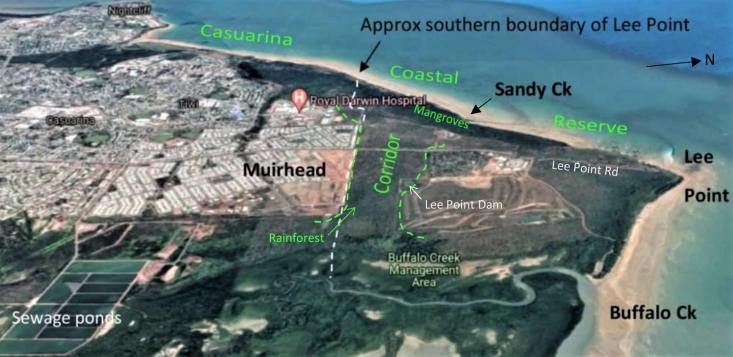
The Corridor has many tree hollows because of its old trees. Birds that nest in these tree hollows include; owls, cockatoos, parrots, kingfishers and most likely Gouldian Finches.
Tree hollows occur in trees typically over 70 years old – they happen as a result of wind breakage, lightning strikes, fire and/or from consumption and decay of internal wood by fungi and insects – particularly termites.
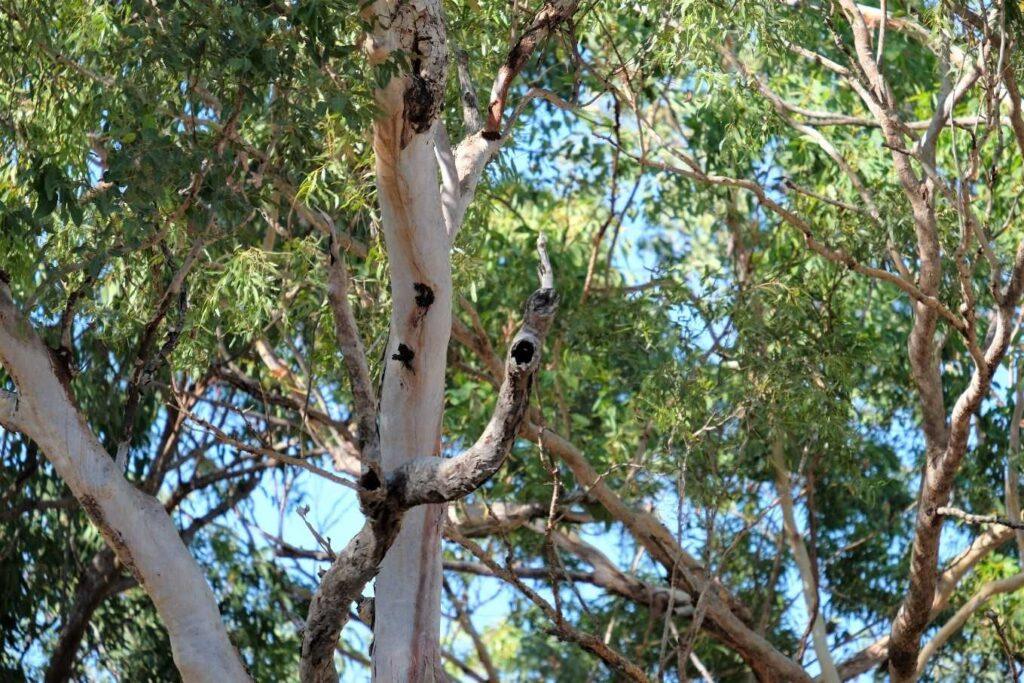
8. Breakfast at Lee Point Dam

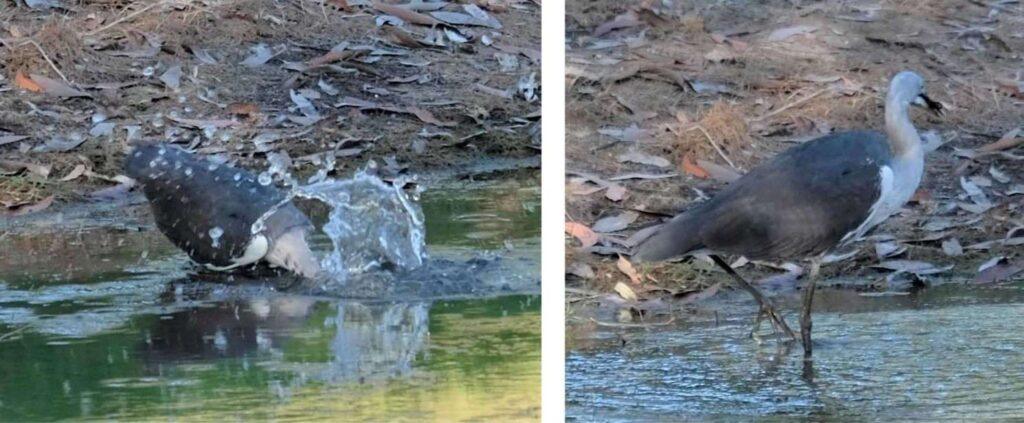
This heron has been spending time at the Lee Point dam along with a white faced heron, cormorant, egret and darter.
9. Gouldian Finches in Lee Point Corridor
Gouldian Finch life begins with courting (filmed at Lee Point).The first weeks are spent in a tree hollow nest; two weeks as an egg, three weeks as chick before leaving the nest as a young juvenile (based on captive breeding). The parents help feed the young juveniles in their first weeks away from the nest as they can only fly relatively short distances.
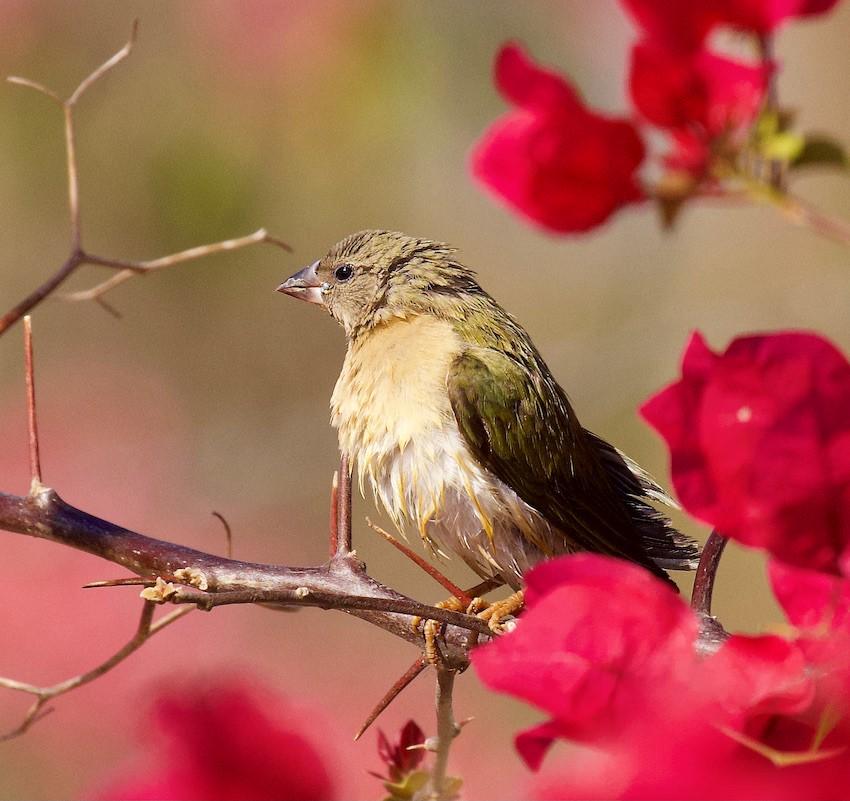
A young juvenile gouldian enjoying the sprinklers at Lee Point Caravan Park. The nodules near its beak means that it is less than three months old.
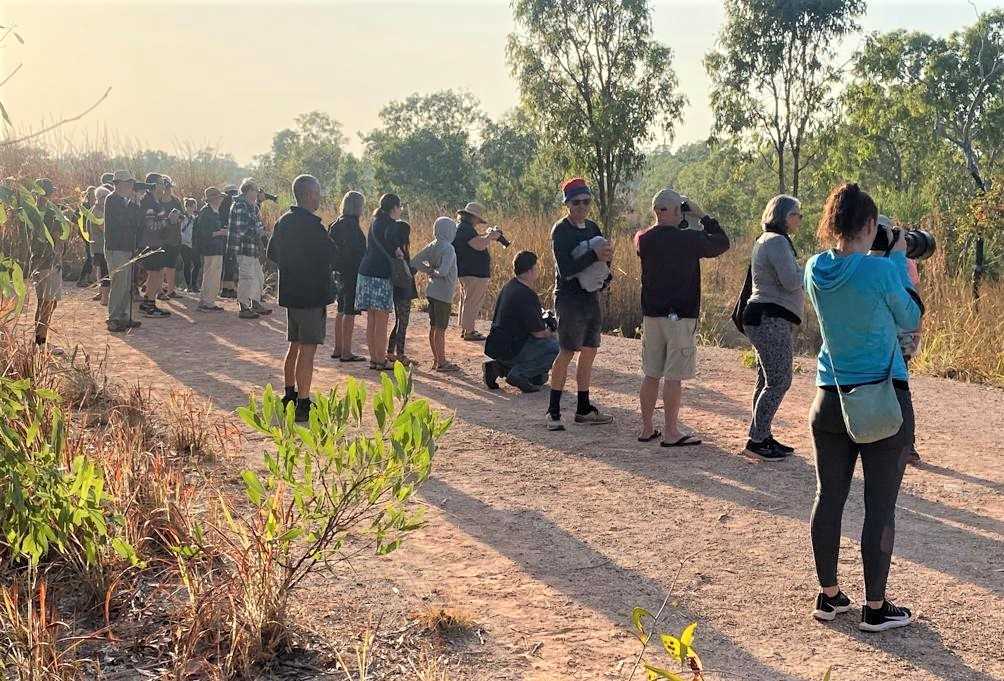
FLP ran two Gouldian Finch Walk events on 18 July and 30 July. In total, approx 180 people attended these events and most saw Gouldian Finches.
To date, thousands of people (approx half from interstate) have seen these rare and beautiful finches at the Corridor, read Gouldian Finch Irruption at Lee Point.
10. Flowering plants in Lee Point Corridor
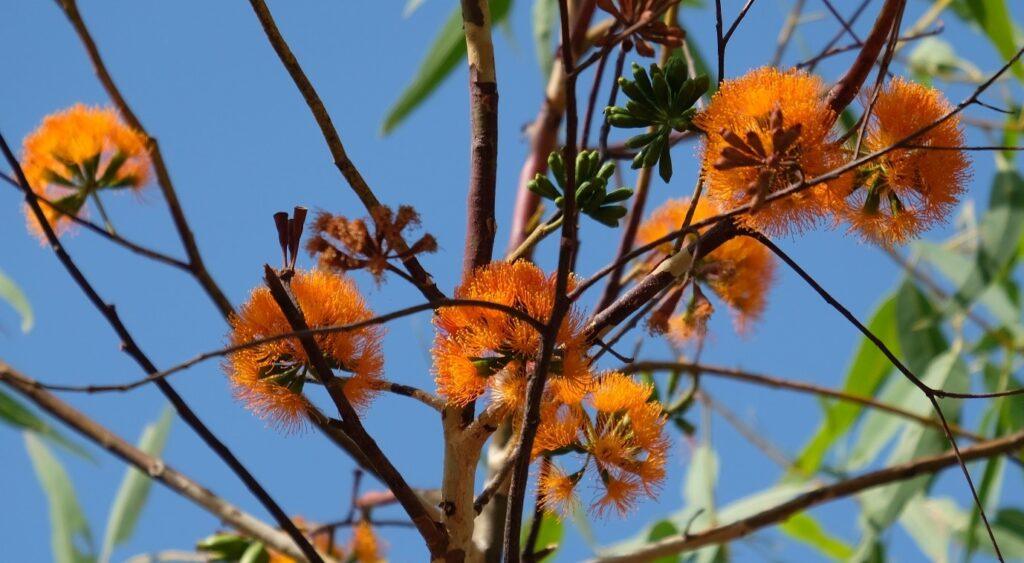

Turkey Bush is common in disturbed gravel areas; its crushed leaves have a fragrant aroma.
Until next time, enjoy the Dry Season at Lee Point
Answer Q1. D. Australia – Based on the SoE report.
AnswerQ2. C. Australia. The SoE report states that “Australia is listed as number 3 (behind China and the United States) among countries with the highest loss of soil organic carbon”. Refer: https://soe.dcceew.gov.au/land/environment/carbon